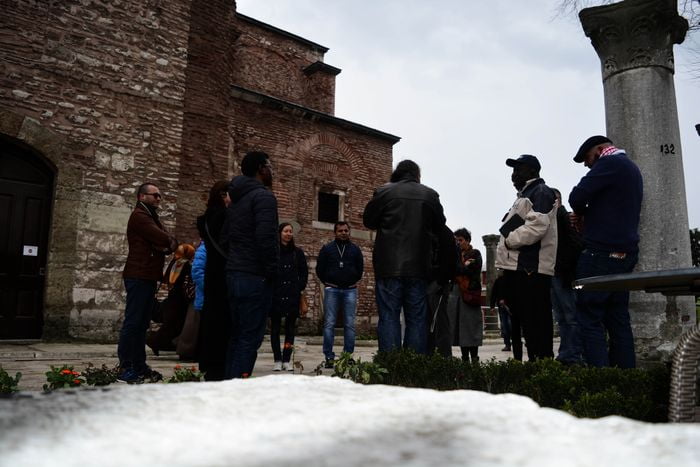Jacob worshipped his brother Esau and Pharao, the Egyptian, but on the point of his staff. (Gen 33.3) He worshipped, he did not adore. Josue and Daniel worshipped an angel of God; (Jos. 5.14) they did not adore him. The worship of latreia is one thing, and the worship which is given to merit [10] another. Now, as we are talking of images and worship, let us analyse the exact meaning of each. An image is a likeness of the original with a certain difference, for it is not an exact reproduction of the original.
Representations and images
Thus, the Son is the living, substantial, unchangeable Image of the invisible God (Col. 1.15), bearing in Himself the whole Father, being in all things equal to Him, differing only in being begotten by the Father, who is the Begetter; the Son is begotten. The Father does not proceed from the Son, but the Son from the Father. It is through the Son, though not after Him, that He is what He is, the Father who generates. In God, too, there are representations and images of His future acts,-that is to say, His counsel from all eternity, which is ever unchangeable. That which is divine is immutable; there is no change in Him, nor shadow of change. (James 1.17)
Blessed Denis, (the Carthusian [i.e., Pseudo-Dionysius]) who has made divine things in God’s presence his study, says that these representations and images are marked out beforehand. In His counsels, God has noted and settled all that He would do, the unchanging future events before they came to pass. In the same way, a man who wished to build a house would first make and think out a plan. Again, visible things are images of invisible and intangible things, on which they throw a faint light. Holy Scripture clothes in figure God and the angels, and the same holy man (Blessed Denis) explains why.
When sensible things sufficiently render what is beyond sense, and give a form to what is intangible, a medium would be reckoned imperfect according to our standard, if it did not fully represent material vision, or if it required effort of mind. If, therefore, Holy Scripture, providing for our need, ever putting before us what is intangible, clothes it in flesh, does it not make an image of what is thus invested with our nature, and brought to the level of our desires, yet invisible?
Read More about Apologia of St John Damascene Against those who Decry Holy Images Part 35








